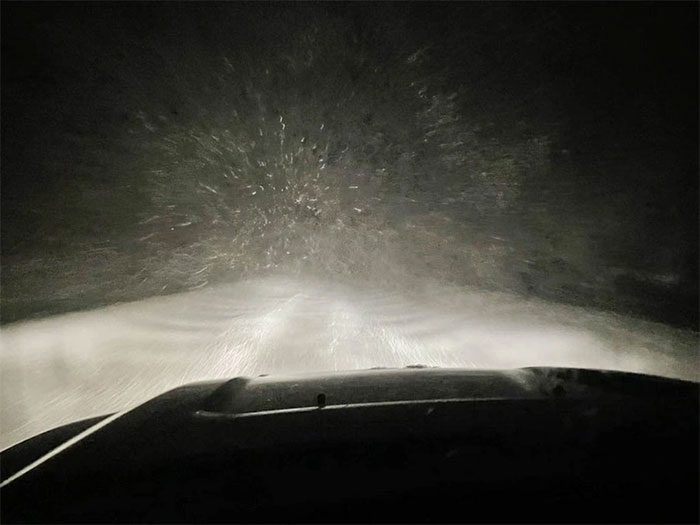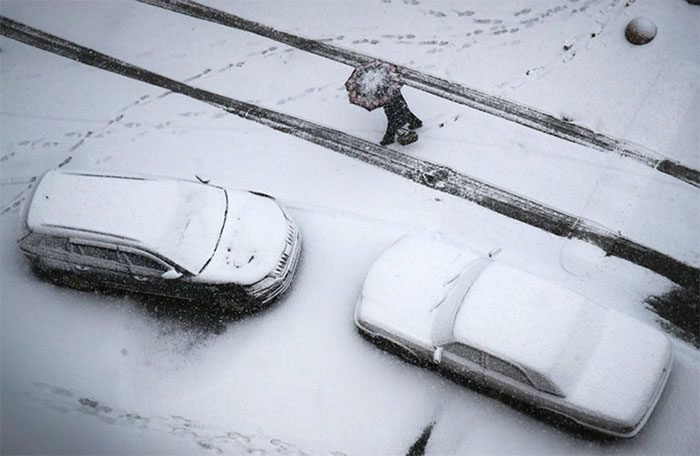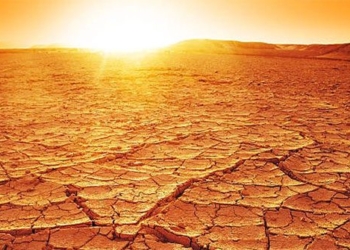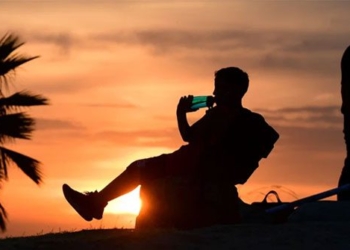After Record Heat, the U.S. Faces a Series of Unusual Weather Events
Massive ice blocks are causing traffic disruptions in Fairbanks, the second-largest city in Alaska, which is currently experiencing a series of unprecedented winter storms.

Freezing rain makes driving extremely dangerous.
Scientists believe that the burning of fossil fuels and other uncontrolled human activities are altering the climate, making it more unpredictable and increasing the likelihood of severe natural disasters.
Rick Thoman, a weather expert at the University of Alaska, Fairbanks, describes the recent weather conditions in the area as “very unusual.”
Hours after Kodiak Island in southern Alaska recorded a temperature of 19.4 degrees Celsius—the warmest December temperature ever recorded—a sudden downpour described as “pouring rain” occurred, believed to be unprecedented in history. Following this, temperatures dropped sharply, and everything froze.
In California, persistent snow and rain continue to cause serious problems such as localized flooding, forcing residents to evacuate from areas around Los Angeles.
In the northern part of the state, Lake Tahoe—where wildfires occurred a few months ago—has been buried under heavy snow, resulting in several fatalities. In November 2021, unusual freezing rain also caused widespread power outages in the Far East when the power plant in Vladivostok, Russia, had to temporarily shut down due to a snowstorm.
Icemageddon – The Event that Wiped Out Dinosaurs May Challenge Humanity

Derived from “Armageddon,” the term “Icemageddon” refers to a type of dangerous natural disaster, characterized by ice storms and the formation of a thick layer of ice on the ground.
For this condition to occur, two factors are required: heavy rain when temperatures rise, suddenly dropping to below freezing (0 degrees Celsius or 32 degrees Fahrenheit).
Moist air also exacerbates the situation, leading to the frequent occurrence of freezing rain.
When a large amount of freezing rain accumulates on objects, branches can become heavier and bend. They also cover roads with a slippery layer of ice, making it easy for pedestrians to slip and creating dangerous traffic conditions.
Additionally, freezing rain causes significant damage, such as mass crop deaths and power outages due to ice accumulation on power lines. Ice on aircraft wings can also pose serious operational issues.
According to scientists, the current extinction rate is 4,000 times faster than during the age of the dinosaurs, as every human impact leaves severe repercussions on nature, making recovery difficult. Overexploitation of resources without conservation has gradually diminished the life of the entire biosphere.
Occurring 251 million years ago, the Permian extinction event wiped out more than 90% of marine life and 70% of terrestrial species due to the greenhouse effect, which made Earth increasingly hotter and faced it with ever more severe natural disasters. Even under the ocean, changing currents have led to the disappearance of many ecosystems, making life extremely fragile.



















































